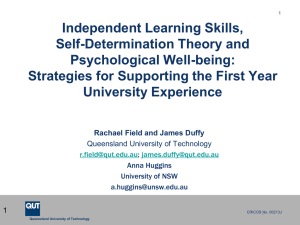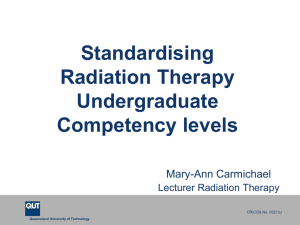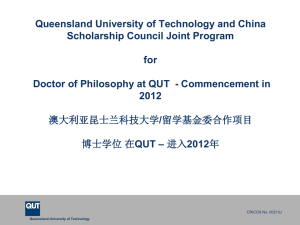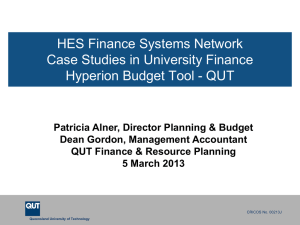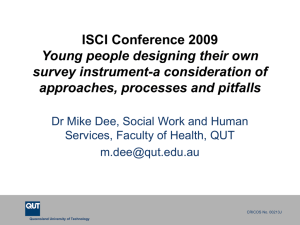Community Participation
advertisement
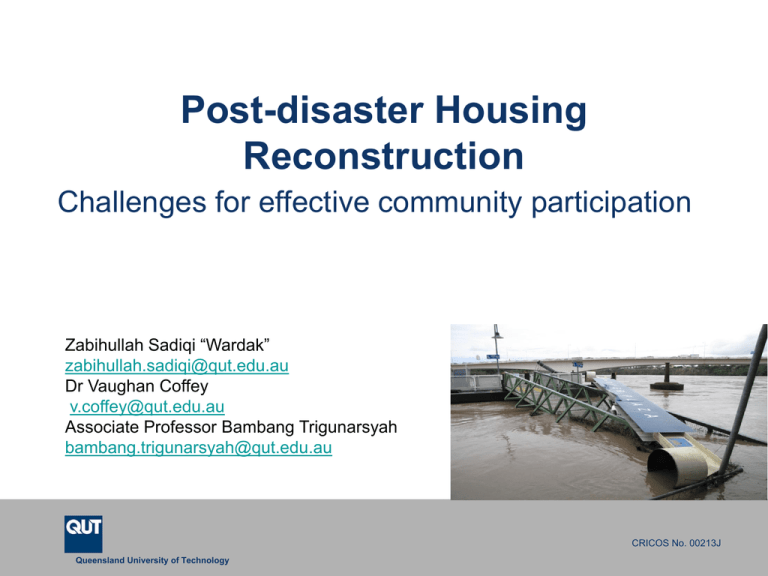
Post-disaster Housing Reconstruction Challenges for effective community participation Zabihullah Sadiqi “Wardak” zabihullah.sadiqi@qut.edu.au Dr Vaughan Coffey v.coffey@qut.edu.au Associate Professor Bambang Trigunarsyah bambang.trigunarsyah@qut.edu.au CRICOS No. 00213J Queensland University of Technology Community Participation: Participation Importance http://www.afghanistan.gc.ca/iwglobal/utilities/FileProcessor.aspx?file= /canadaafghanistan/assets/images/shuraqr7.jpg&version=20100316081825 • Local communities and the survivors of a disaster play a crucial role in post-disaster reconstruction and their participation ultimately determines project success. • Members of the affected community have the most knowledge about their own communities and specific building requirements, together often with a good technical knowledge of appropriate building techniques and materials, it is critical to involve them when conducting community needs assessments and when planning reconstruction projects. a university for the real world R CRICOS No. 00213J Community Participation: Problems • Although government agencies (GOs), International funding bodies and non-governmental organisations (NGOs) broadly appreciate the value of community participation, the principle of community participation is not evident in the veracity of reconstructions already carried out on the ground. • Reconstruction projects are often designed and managed in ways that best cater for the interests of large players leaving little or no room at all for grassroots participation. a university for the real world R CRICOS No. 00213J Community Participation: Challenges http://northshorejournal.org/rebuildingthe-ancient-irrigation-canals Political and social pressure: • Community participation requires adequate time for planning and organising, and yet governments tend to refrain from involving communities in reconstruction projects as this may slow down the impression that reconstruction is speedily progressing. • Effective participation requires involvement from multiple stakeholders, and as such, there is a risk of the process being influenced and affected by a particular group. a university for the real world R CRICOS No. 00213J Community Participation: Challenges http://www.afghan-web.com/gallery Lack of effective communication and cultural awareness: • Lack of effective communication and substantial awareness of the local culture leads to poor post-disaster reconstruction outcomes. This is particularly true when reconstruction is to be executed in collaboration with international organisations that have limited understanding of the local culture. • Conducting community needs assessments without absolute knowledge about the local culture negatively impacts on any effective community participation in the process of post-disaster housing reconstruction. a university for the real world R CRICOS No. 00213J Community Participation: Challenges http://blogs.abcnews.com/photos/uncategorized/afghan_women_burqa_nr.jpg Gender imbalance in community participation: • Throughout the whole history of disasters and their aftermaths, the female population has suffered far greater losses of life, shelter and livelihood opportunities than the male population and this trend is quite likely to continue in the future. • Female population is generally misconceived as being incapable of contributing to the actual reconstruction effort. Therefore, and as a result of such prevailing prejudice, their potential for effective participation is often disregarded. a university for the real world R CRICOS No. 00213J undp.org.af Conclusion Post-disaster reconstruction projects are often designed poorly due to the lack of absolute understanding of the local culture and needs. Community participation is usually misconceived as being the main reason for delays in project delivery, and as such, hasty decisions without local participation frequently result in houses that are neither socio-culturally appropriate nor supportive of livelihood. a university for the real world R CRICOS No. 00213J Thank You CRICOS No. 00213J Queensland University of Technology
